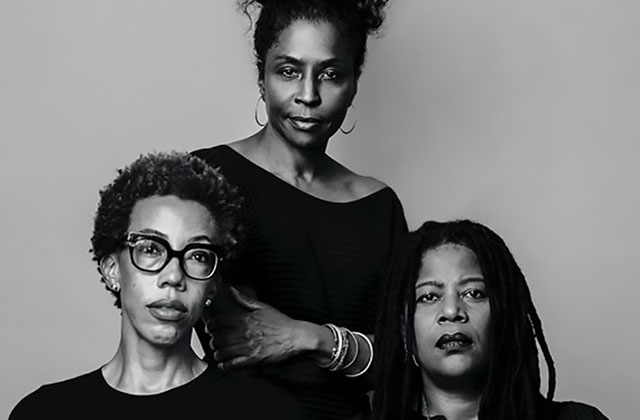Black visual artists seem to be shifting the narrative these days, and sculptor Simone Leigh (“Brick House”), painter Amy Sherald (“First Lady Michelle Obama”) and photographer and multimedia artist Lorna Simpson (“Ebony Collages”) are three people who are making it happen. In a discussion published by The New York Times Magazine on Tuesday (October 8), the visionaries shared their thoughts on this movement. Here are three must-read excerpts from the interview.
On Black women artists having their moment:
rntLeigh: The changes I see are across culture—there was a Black photographer today, for example, and our moderator is Black. That’s more normal than it would have been even a year ago in my experience—and it wasn’t even a surprise to me.
Sherald: My niece came up with her father to New York to see Serena Williams and Coco Gauff and Naomi Osaka play in the U.S. Open, and I realized that she’s going to grow up never knowing there were no Black tennis players. She was born when Barack Obama was president, so Blackness is just a norm for her. It’s different than it was for our generation. We still walk into spaces, and we see Black people, and we high-five—“Yeah, we’re here.” We treat it as if it’s an achievement, and they will treat it as if it’s a norm.
Simpson: This is a moment, but I think this is also a moment that has been in the making. In the late ’80s and ’90s, commercial galleries did not focus on works by artists who were not European or White. The Studio Museum in Harlem and Just Above Midtown (JAM) were interested in cultivating and presenting work by artists that you could not see in other venues. JAM showed the work of the Black conceptual artist David Hammons, and for a young artist like me, seeing his work was an amazing, emboldening experience. […] Yes, this is an important moment, but it reflects the previous changes that were made within institutions. We have to also see this not just as a moment of visibility for Black artists but also one of historically White institutions finally dragging themselves into the 21st century.
On embedding codes of Blackness into their work:
rntLeigh: When I would give talks or have speaking engagements, like at the Creative Time Summit in Venice in 2015, I would announce that I was making my work primarily for Black women. And people thought I was out of my gourd. […] What I didn’t expect was that it would start to function as a call. It brought a lot of people into my life who could see that I was trying to do something different. It helped me build a community around myself. It’s not an original idea. Toni Morrison set a model for this mode of working, prioritizing Black audiences, and Black women in particular.
On having the work transform those who encounter it:
rntSherald: I think about those seventh-grade Black students on a field trip to the Museum of Fine Arts in Boston who were harassed by visitors and museum staff. People have ideas about what Blackness is, and they were projecting it onto these kids. I would like to think that because my images will hang in places like that, they might effectuate something positive by their presence alone. We as Black people still have the power to shift spaces.
Simpson: Can I make a comment? This is kind of the elephant in the room. Amy, you painted Michelle Obama, royalty in America. That is a seminal work of an iconic person. The two portraits of the Obamas—the president was painted by Kehinde Wiley—are the first paintings of their sort that will exist at the National Portrait Gallery in Washington. There was a lot of weight on that painting: exterior expectations of what a portrait of Michelle Obama should be, the historical importance of the presidency and of her as a first lady. With those pressures in mind, it takes a certain amount of bravery to make what you want to make and not just go the route of people’s expectations. On every freaking level, that is unusual. You’re giving people the opportunity to see differently than is expected, both in the color palette you use and the context of the other paintings in the hall. And it is quite wonderful.
Read the full interview here.
